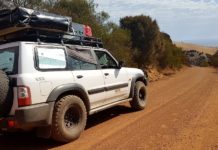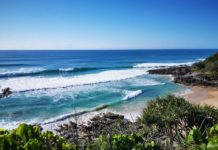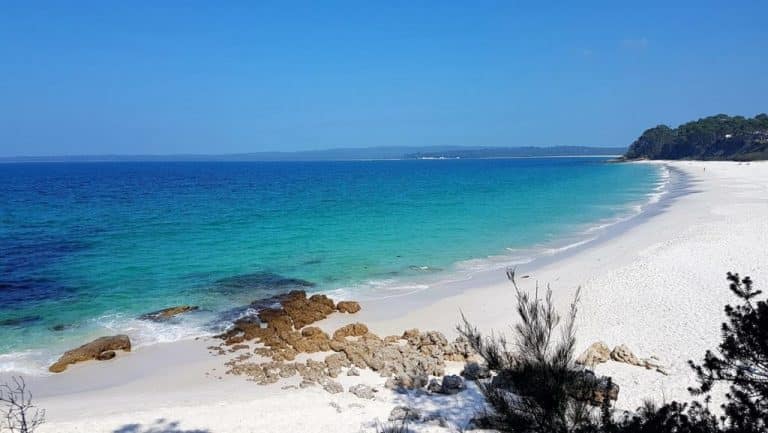
If you’re looking for things to do in the Sydney area, don’t miss Jervis Bay. Jervis Bay, located on the south coast of New South Wales, is renowned for its stunning beaches, crystal-clear waters, and abundant marine life. This natural paradise is a perfect getaway for those looking to relax, explore, and connect with nature. Here’s a complete guide to exploring Jervis Bay, covering everything from must-see attractions to the best activities and practical tips.
Table of Contents
Getting there
Jervis Bay is located on the east coast of Australia, about a 2h45 drive south of Sydney. The bay is easily accessible, which makes it the ideal destination for a holiday or weekend away.
By car
Driving your own vehicle is the best way to get to Jervis Bay. We recommend you take the Grand Pacific Drive, a 140km highway that starts south of Sydney and ends in Nowra. This route is one of the most spectacular drives in the world. The drive is scenic, passing through charming coastal towns and lush national parks. You will also cross the famous 665m Sea Cliff Bridge.
If you don’t have your own means of transport, the second best option available to you is renting a vehicle. At Sydney Airport, you can rent a car for as long as you want. This is expensive, but having your own way to get around is a big advantage. Budget around $300 for two days.
Read more: Vehicle rental Australia
By bus
Jervis Bay has its own airport, but it is a military airport and you can’t get a flight there as a civilian.
A shuttle service (Jervis Bay Airport Express) operates from 7:30am to 8pm from Sydney Airport. The journey takes about 3 hours. To view the timetable, click here.
By public transport
You can take a train from Sydney to Bomaderry (Nowra) on the South Coast Line, followed by a bus to Jervis Bay. The entire journey takes around 4 hours.
On an organized tour
If you want to visit Jervis Bay in a day, there are many tour operators offering excursions from Sydney. Budget about $160 per person including the return trip from Sydney and a whale watching excursion.
When to go and how long to spend there?
Best time to visit Jervis Bay
Jervis Bay can be enjoyed year-round, but the best time to visit is during the warmer months from November to April. During this period, the weather is ideal for beach activities, swimming, and exploring the outdoors. Whale watching season runs from May to November, offering a fantastic opportunity to see these magnificent creatures.
How long should I stay?
Jervis Bay is a magical, relaxing place where you can recharge your batteries and connect with nature. You can go there just for a weekend, for a few days or for a longer vacation. The area is full of things to do and explore, so you’ll never be bored.
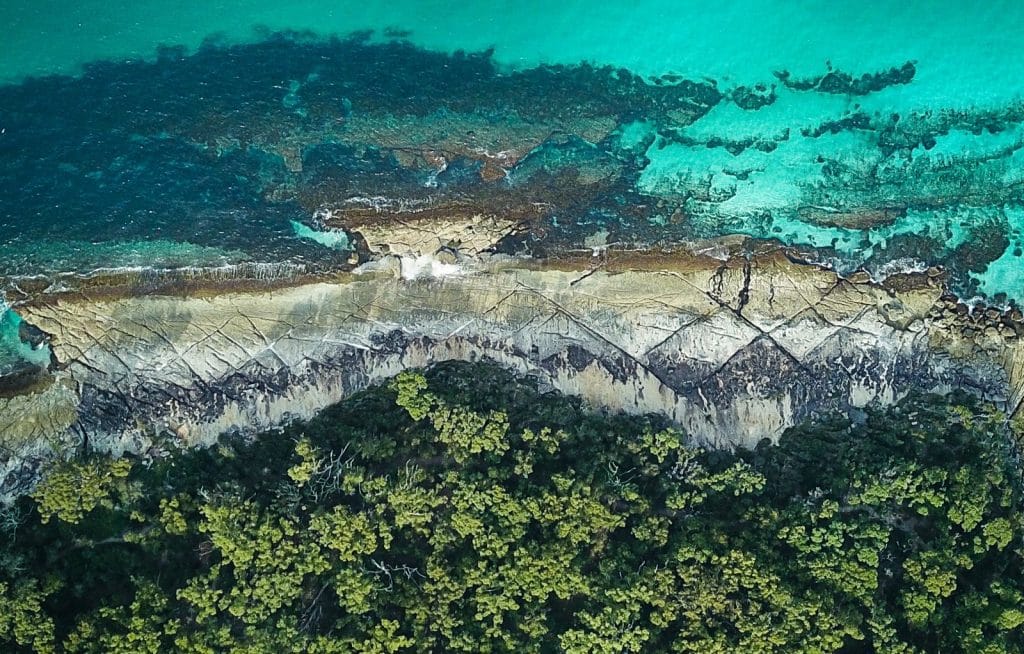
Top Attractions and Activities
Visit Booderee National Park
This magnificent national park boasts several splendid beaches and small hiking trails. You’ll also find a lovely botanical garden, the ruins of the Cape St George Lighthouse, and historic native sites.
You can visit the national park with a pass that costs $13 per vehicle, and is valid for 48 hours. The pass also gives you access to the botanical garden, which is open from 8am to 4pm (from May to September) or until 5pm or even 7pm (from October to April).
The botanical garden is partly maintained by indigenous people. In the garden are many plants that they use to heal and feed themselves. To understand each plant, leaflets are available at the entrance to the park. You can continue your walk along the shores of the lake until you reach the forest. The walk is quite easy, and the whole visit will only take you about 2 hours.
Booderee National Park offers a wealth of activities, including hiking, camping, and wildlife spotting. Key highlights include:
- Green Patch Beach: A beautiful, sheltered beach ideal for swimming and picnicking.
- Murrays Beach: Known for its clear waters and excellent snorkeling opportunities.
- Botanic Gardens: Explore the native flora of the region and enjoy a peaceful walk.
Discover the walks
From Iluka Beach (the first beach in the national park), you can reach the other beaches via paths that run along the bay (Green Patch, Bristol Point and Scottish Rocks).
Continuing on Jervis Bay Road, you can reach the last beach on the bay side: Murrays Beach. From this point, you can embark on the Munyunga Waraga trail. This hike is located on the tip of the bay. The view of the ocean and the bay is amazing.
The first 20 minutes of the hike will bring you to Governor Head. If you wish to continue your journey, you will have to follow the ocean for 5.5km or 2h30. To mix things up, you can do the return through the forest (or vice versa).
White Sands Walk and Scribbly Gum Track is an easy coastal walk starts at Greenfield Beach and takes you through stunning scenery, including white sandy beaches and scribbly gum forests. It’s a great way to explore the coastline and enjoy the natural beauty of the area.
Finally, take a look at the national park website to discover the range of walks available to you.
Be careful – part of this wonderful territory is reserved for the Aboriginal community and it is strictly forbidden to go there. To find out what places you are authorised to visit and make sure not to miss anything, go to the information point located at the entrance to the park.
Chill at the beach
Bay side
Hyams Beach is famous for having some of the whitest sand in the world. The beach is perfect for swimming, sunbathing, and snorkeling. Arrive early to secure a good spot, as it can get crowded during peak times.
Along the bay, there are more beaches, which also offer immaculate white sand and turquoise waters. We recommend you check out Murrays Beach, Moona Moona Creek, Blenheim Beach, Nelsons Beach, Greenfield Beach and even Chinamans Beach or Hare Bay. For a slightly less touristy spot, go relax at Warrain Beach or Callala Beach and Callala Bay.
Popular with surfers and campers, Cave Beach is known for its scenic beauty and excellent surf breaks. The nearby campground is a great place to stay if you want to immerse yourself in nature.
Ocean side
Renowned for its beautiful sunset, settle down at Cave Beach in the early evening and admire the spectacle that awaits you. Don’t forget to bring something to drink and eat, make a picnic of it! Wilsons Beach, Steamers Beach and Five Mile Beach are also very nice beaches where you can enjoy the beauty of the bay.
Try some watersports
The multitude of activities on offer at Jervis Bay will delight you. There is something for everyone here, at very affordable prices. The first thing to do if you want to cool off and experience the crystal clear waters of the bay is simply to go for a swim. If you want to see more, put on a mask and snorkel and go for an impromptu snorkeling session at Green Patch or Blenheim Beach.
If that is still not enough for you, you can book a trip with a scuba diving centre. You can choose between an introductory dive or one for more advanced divers. For snorkeling or scuba diving, head to Marine National Park. If you’re a bit more adventurous and want to live Robinson Crusoe style, then fishing is for you! You can also try your hand at taming the waves with some surfing at Cave Beach. Finally, book some stand-up paddle boarding or kayaking and soak up the tranquil atmosphere of the bay. You can rent equipment by the hour or by the day and sign up for lessons if you are a beginner.
In summer, you will need to book in advance to ensure availability as it is a busy time.
Observe wildlife
Jervis Bay is an important nature sanctuary for animals. It is full of terrestrial, marine and flying species. It is very easy to spot grey kangaroos here. If you are staying at Bream Beach Holiday Camp or Bushy Tail Caravan Park then you are guaranteed to see some, and up close! You might also be lucky enough to spot some on the beach, which is another fabulous sight, especially when the sun goes down.
But that’s not all – you will certainly have the opportunity to meet many other species during your stay here. The national park is home to an incredible array of native wildlife such as snakes, spiders, opossums and swamp wallabies, as well as echindnas, lizards and quolls.
Thanks to the creation of the Jervis Bay Marine Park in 1998, hundreds of marine species have also made their home here. The park protects the coastline for more than 100km. You can come face to face with grey nurse sharks during a diving or snorkeling session. Stingrays are in the game too! If you want to observe some up close (and without getting wet), take the road to Woollamia (15/20 minutes drive north of the bay). Head to the harbour, where stingrays wait to greet returning anglers.
If you’re luck, you may have the opportunity to see little penguins! Finally, there is a remarkable diversity of bird species here, including several cockatoos.
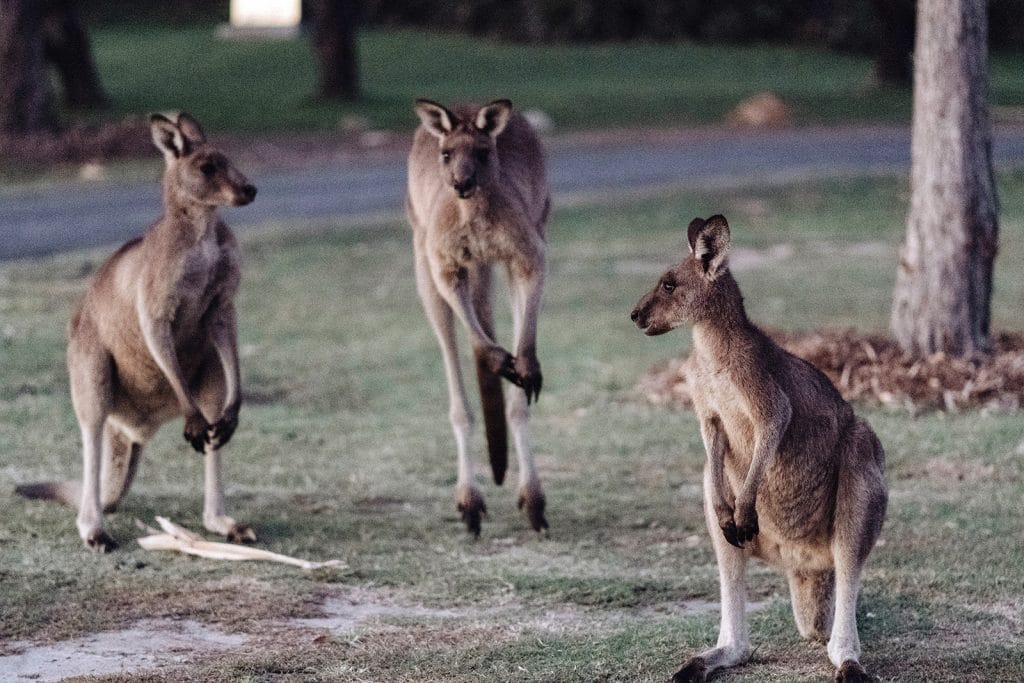
Go on a trip
Jervis Bay is popular for dolphin and whale watching. The bravest among you will even have the opportunity to swim with whales (and seals)! The two main tour operators in Jervis Bay are Jervis Bay Wild and Dolphin Cruise.
Jervis Bay Wild offers a 1.5-hour excursion to meet dolphins from $25 (departures at 10:30 a.m. and 1 p.m.). You can also go whale watching for 2 hours for approximately $50. These excursions are only available from mid-May to mid-November during the whale migration season (identical departure times).
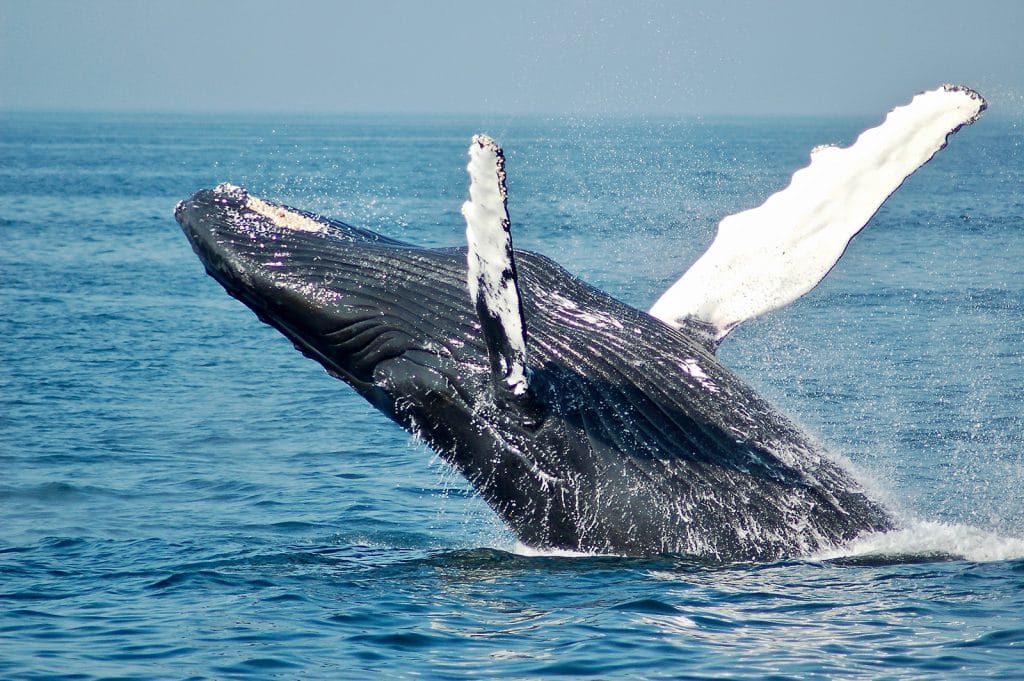
Where to sleep?
Several campsites and caravan parks are located in and around Jervis Bay. Remember to book your stay well in advance during the high season (December to January). Inside Booderee National Park, you’ll find Bristol Point (tent camping only) and Cave Beach, two campsites a short walk from the beach. In addition, Green Patch is the largest campsite in the national park. Also close to the beach, it accepts motorhomes. You will also find the BIG 4 Caravan Park in Jervis, which has all the necessary amenities.
If you don’t want to give up your creature comforts, Paperbark Camp offers luxury canvas tents with a king size bed, bath and/or shower, small living room, meals (optional), your own terrace etc. These tents can accommodate up to to 6 people.
That being said, you will have to pay a small fortune to be able to enjoy all this luxury! At Paperbark Camp, prices start at $940 for 1 night for 4 people, with breakfast and dinner included.
Finally, for the more adventurous among you, a free rest area is located at the intersection of Princess Highway and Sussex Inlet Road.
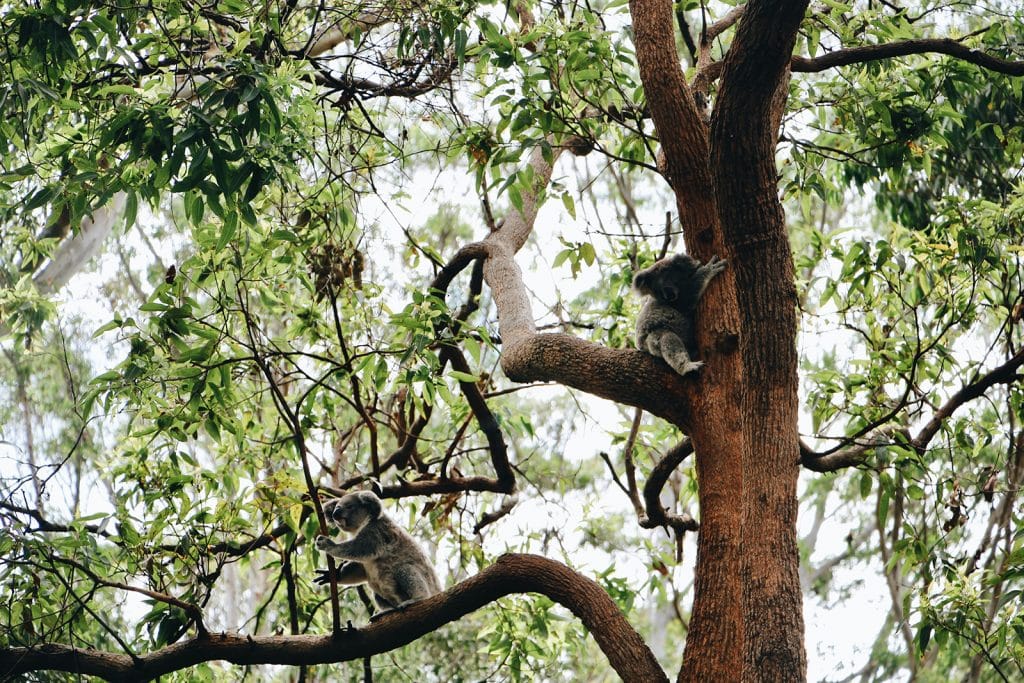
Jervis Bay FAQs
The best places to view marine life in Jervis Bay are the beaches of Hyams, Murrays and Greenpatch, and the protected area of Booderee National Park.
The average cost of a visit to Jervis Bay depends on the type of accommodation and the activities chosen, but it can vary between $150 and $300 per day.
There are several safe beaches for swimming in Jervis Bay, including Hyams, Greenpatch and Murrays beaches.
Yes, whales and dolphins can be seen in Jervis Bay, especially during the migration months between May and November.
We recommend that you allow at least 2-3 days to visit Jervis Bay, to fully enjoy all the activities and attractions.




















